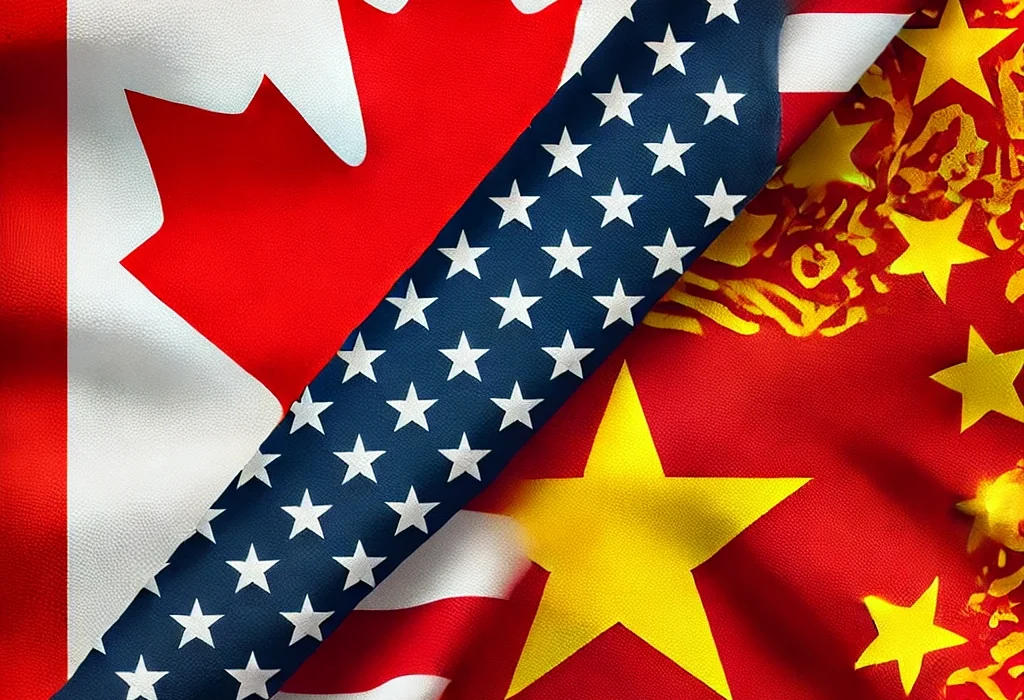The ongoing trade tensions between Canada and the United States have raised serious concerns about the future of Canadian exports. As two of the largest trading partners in the world, any disruption in their economic relationship could have significant consequences, particularly for Canada’s commodity sector. With the increasing strain on US-Canada trade relations, could China be a viable alternative for Canada’s commodity exports?
Understanding the Canada-US Trade War
The Canada-US trade war is rooted in longstanding disputes over tariffs, subsidies, and trade policies. In recent years, the United States has imposed tariffs on Canadian aluminum and softwood lumber, citing national security concerns and unfair trade practices. In retaliation, Canada has levied countermeasures on American goods. These trade conflicts disrupt the flow of commodities, impacting industries that rely on cross-border supply chains.
The Impact on Canada’s Commodity Exports
Canada is a major exporter of natural resources, including oil, natural gas, minerals, and agricultural products. The US remains Canada’s primary market, but growing trade restrictions and protectionist policies threaten this relationship. Key commodities affected by the trade tensions include:
- Oil & Gas: The US is the top destination for Canadian crude oil, but regulatory changes and pipeline disputes have created uncertainties.
- Lumber & Metals: Tariffs on softwood lumber and aluminum have strained trade, leading Canadian producers to seek alternative buyers.
- Agriculture: Due to shifting US policies, Canadian farmers have faced challenges in exporting dairy, pork, and wheat.
China: An Alternative Trade Partner?
China, the world’s second-largest economy, presents a significant opportunity for Canada’s commodity exports. However, trade relations between Canada and China have been turbulent, particularly after the Huawei dispute and the detainment of Canadian citizens in China. Despite political challenges, China remains a major buyer of global commodities, and Canada could explore the following trade opportunities:
- LNG Exports: China’s push for cleaner energy presents an opportunity for Canadian liquefied natural gas (LNG) exports.
- Minerals & Rare Earth: With China’s strong demand for minerals, Canada’s vast reserves of nickel, lithium, and copper could be valuable.
- Agricultural Products: China’s growing population and food security needs create a market for Canadian grain, pulses, and meat products.
Challenges in Pivoting to China
Despite the potential, shifting trade dependence from the US to China is not without challenges. Some of the key hurdles include:
- Geopolitical Tensions: Diplomatic strains between Canada and China could impact trade agreements.
- Regulatory Barriers: China has strict trade regulations and import restrictions that could limit Canadian exports.
- Market Competition: Canada would have to compete with other resource-rich nations like Australia and Brazil, which have stronger trade ties with China.
Diversification: The Best Strategy for Canada
Rather than relying solely on China or the US, Canada should focus on trade diversification. Expanding trade partnerships with the European Union, Japan, South Korea, and other emerging markets could help reduce dependence on a single country. Strengthening domestic processing and refining capabilities can also add value to raw commodities before export, making Canadian goods more competitive globally.
Conclusion
The Canada-US trade war poses significant risks to Canada’s economy, particularly for its commodity sector. While China presents an alternative market, political and regulatory challenges remain. A strategic approach that includes diversification, strengthening trade relations with multiple partners, and adding value to exports will be key to Canada’s long-term economic resilience.
As Canada navigates these trade challenges, policymakers and businesses must focus on securing stable markets and enhancing the competitiveness of Canadian commodities on the global stage.





Leave feedback about this